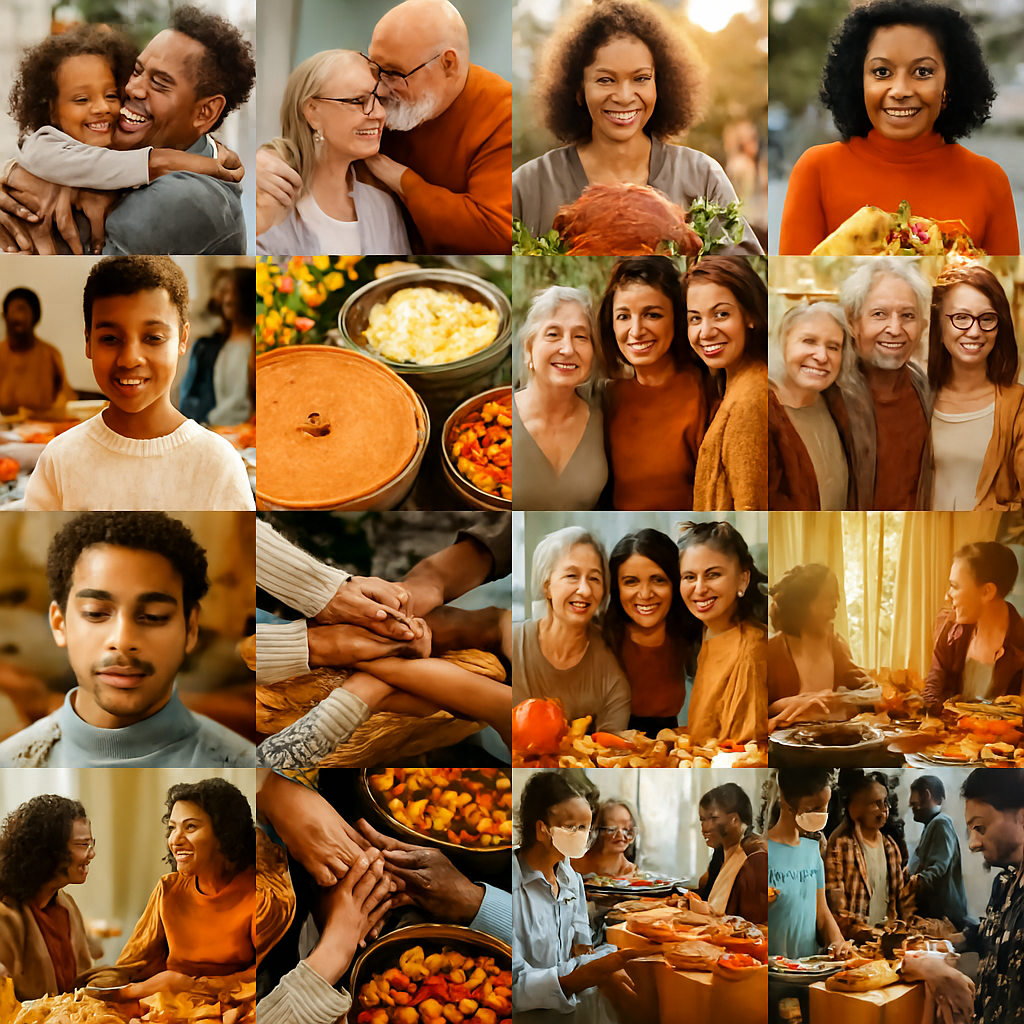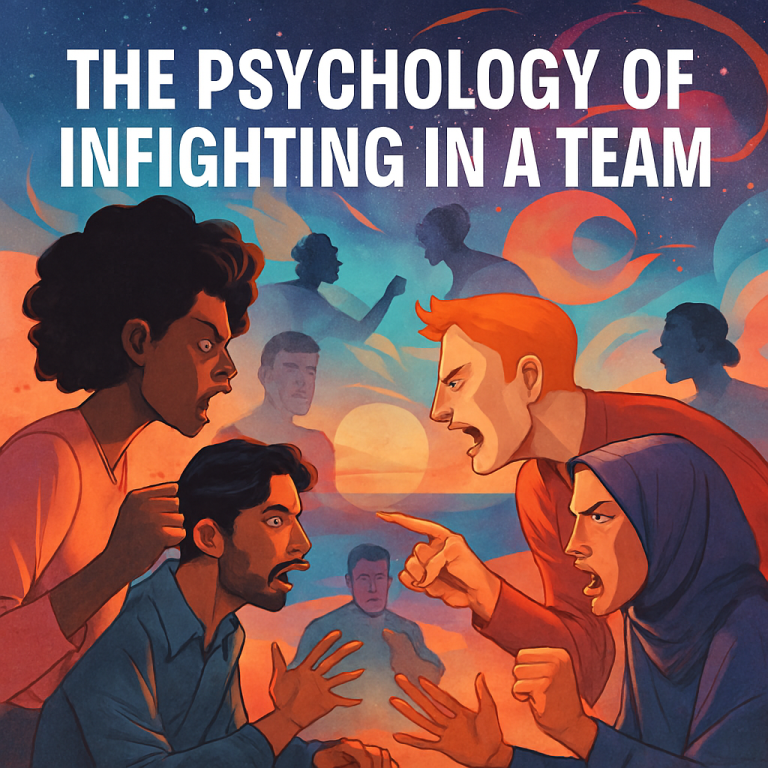
Precious Meaning Of Thanksgiving And Its Special Impact
Meaning Of Thanksgiving – Understanding The Essence Of Thanksgiving
Thanksgiving is widely recognized as a holiday rooted in gratitude, community, and historical tradition, yet its meaning extends far beyond the feast of turkey and pumpkin pie, becoming a cultural symbol of reflection and renewal. It originated in the early seventeenth century when settlers and Indigenous peoples shared harvest meals, and over time it evolved into a national day of thanks in the United States and Canada. The holiday emphasizes gratitude as a psychological anchor, encouraging individuals to pause and appreciate blessings both large and small. It is not merely about food but about the people gathered around the table, the memories created, and the traditions passed down through generations.
Thanksgiving also carries spiritual undertones, reminding many to express reverence for life’s gifts and to cultivate humility in daily living. The celebration fosters togetherness, bridging differences and strengthening bonds among families and communities. It is a reminder that gratitude can be practiced every day, not just on the fourth Thursday of November. The holiday’s cultural significance lies in its ability to blend history, spirituality, and personal reflection into one meaningful occasion. For many, Thanksgiving is a moment to reconnect with values of generosity, compassion, and shared humanity. Ultimately, it is a tradition that continues to shape personal identity and collective memory, offering lessons that resonate far beyond the holiday itself.
Gratitude As A Foundation Of Thanksgiving
Thanksgiving is built upon the principle of gratitude, which psychologists identify as a powerful tool for mental health and emotional resilience. Gratitude shifts focus from scarcity to abundance, helping individuals recognize the positive aspects of their lives. It strengthens relationships by encouraging appreciation for others and deepening emotional bonds. Gratitude also reduces stress, as studies show that thankful individuals experience lower levels of anxiety and depression.
The holiday provides a structured opportunity to practice gratitude collectively, reinforcing its benefits through shared rituals. Families often express thanks aloud, creating a communal atmosphere of acknowledgment and joy. Gratitude is not limited to material possessions but extends to intangible blessings such as love, health, and companionship. This practice cultivates optimism, reminding people to see silver linings even in difficult times. Thanksgiving thus becomes a cultural mechanism for embedding gratitude into daily life. By focusing on gratitude, individuals develop resilience against adversity and foster a mindset of hope. The holiday’s emphasis on gratitude demonstrates how traditions can serve as psychological anchors, grounding people in positive perspectives.
Table – Psychological Benefits Of Gratitude
| Benefit | Description |
|---|---|
| Stress Reduction | Gratitude lowers cortisol levels and promotes calmness |
| Relationship Strength | Expressing thanks deepens emotional connections |
| Optimism | Encourages focus on positive aspects of life |
| Resilience | Builds coping mechanisms against adversity |
| Mental Health | Reduces symptoms of anxiety and depression |
Thanksgiving As A Cultural Tradition
Thanksgiving is more than a meal; it is a cultural tradition that embodies themes of community, history, and reflection. The holiday’s roots trace back to harvest festivals, which were common across civilizations as celebrations of abundance. In North America, the Pilgrims’ 1621 feast with the Wampanoag people became a symbolic origin story, though the holiday’s meaning has since expanded. Today, Thanksgiving represents unity, with millions gathering to share meals and traditions.
It is a reminder of cultural continuity, linking past generations with present practices. The holiday also serves as a cultural mirror, reflecting values of generosity and hospitality. Thanksgiving traditions vary across households, yet they all emphasize connection and gratitude. The holiday’s cultural significance lies in its ability to transcend differences, fostering inclusivity and shared identity. It is celebrated with identity and pride by parades, football games, and charitable acts. Thanksgiving thus becomes a cultural anchor, reminding societies of the importance of gratitude and togetherness.
Points – Cultural Elements Of Thanksgiving
- Rooted in harvest festivals across civilizations
- Symbolic origin in 1621 Pilgrim-Wampanoag feast
- Emphasizes unity and shared meals
- Reflects values of generosity and hospitality
- Includes parades, football, and charity
- Links past generations with present practices
- Encourages inclusivity and shared identity
- Reinforces communal spirit through traditions

Spiritual Meaning Of Thanksgiving
Thanksgiving carries spiritual undertones, reminding individuals to pause in reverence and gratitude. It is not only a holiday but also a spiritual practice of acknowledgment. Many see Thanksgiving as a form of worship, lifting voices in prayer or silent reflection. The holiday encourages mindfulness, helping individuals notice small gifts in everyday life. Spiritual gratitude fosters the kindness and understanding of humility, reminding people of being better.
Thanksgiving rituals often include blessings, prayers, or moments of silence, reinforcing its sacred dimension. The holiday’s spiritual meaning lies in its ability to connect individuals with something greater than themselves. It becomes a reminder that gratitude is not only psychological but also spiritual. Thanksgiving thus bridges the material and the transcendent, offering a holistic experience of appreciation.
Table – Spiritual Dimensions Of Thanksgiving
| Aspect | Description |
|---|---|
| Worship | Prayer and reverence during meals |
| Mindfulness | Awareness of small daily blessings |
| Humility | Recognition of dependence on others |
| Sacred Rituals | Blessings and moments of silence |
| Transcendence | Connection to values beyond material life |
Personal Impact Of Thanksgiving
Thanksgiving affects individuals personally by shaping emotional well-being, family dynamics, and personal identity. It provides a moment to pause and reflect on life’s blessings, fostering gratitude and joy. The holiday strengthens family bonds, as shared meals create lasting memories. It also encourages generosity, inspiring individuals to give back to their communities. Thanksgiving rituals become part of personal identity, linking individuals to cultural heritage. The holiday’s personal impact lies in its ability to blend tradition with personal reflection. It reminds people of the importance of relationships and shared experiences. Thanksgiving also fosters resilience, helping individuals cope with challenges by focusing on gratitude. The holiday’s personal meaning varies, yet it consistently emphasizes connection and appreciation.
Points – Personal Effects Of Thanksgiving
- Shapes emotional well-being through gratitude
- Strengthens family bonds with shared meals
- Inspires generosity and community service
- Links individuals to cultural heritage
- Encourages resilience against challenges
- Creates lasting personal memories
- Emphasizes relationships and shared experiences
- Reinforces personal identity through tradition
Family Bonds And Thanksgiving
Thanksgiving is often described as the holiday of family, where the act of gathering together becomes a ritual that strengthens bonds and creates lasting memories. Families travel across states and countries to reunite, demonstrating the importance of connection in a world that often feels fragmented. The shared meal becomes a symbol of unity, where differences are set aside in favor of togetherness. Family traditions, whether they involve recipes, games, or storytelling, reinforce identity and continuity across generations.
Thanksgiving also provides opportunities for reconciliation, as the holiday’s spirit of gratitude encourages forgiveness and healing. The holiday’s emphasis on family highlights the role of relationships in shaping personal well-being. It reminds individuals that family is not only biological but also chosen, encompassing friends and loved ones who provide support. Thanksgiving thus becomes a celebration of belonging, where the table represents inclusion and acceptance. The holiday’s personal impact lies in its ability to remind people of the importance of nurturing family ties.
Table – Family Dimensions Of Thanksgiving
| Dimension | Description |
|---|---|
| Reunion | Families travel to reconnect across distances |
| Tradition | Recipes, games, and rituals reinforce identity |
| Unity | Shared meals symbolize togetherness |
| Reconciliation | Encourages forgiveness and healing |
| Belonging | Includes both biological and chosen family |
Community Service And Thanksgiving
Thanksgiving extends beyond the family table into the wider community, where acts of service and generosity become central to the holiday’s meaning. Many individuals volunteer at shelters, donate food, or participate in charity drives, embodying the spirit of giving. Community service during Thanksgiving reflects the holiday’s emphasis on gratitude, as people share their abundance with those in need. These acts of kindness change understanding and build social care, reminding communities of their collective power and responsibility.
Thanksgiving thus becomes a catalyst for civic engagement, encouraging individuals to contribute to the common good. Community service also fosters empathy, helping individuals understand the struggles of others. The holiday’s impact lies in its ability to inspire generosity and compassion. By serving others, individuals experience gratitude in action, reinforcing the holiday’s core values. Thanksgiving therefore becomes not only a personal celebration but also a communal practice of care.
Points – Community Service Elements Of Thanksgiving
- Volunteering at shelters and food banks
- Donating meals for people less fortunate and supplies to those in need
- Participating in charity drives and fundraisers
- Strengthening social bonds through service
- Encouraging civic engagement and responsibility
- Fostering empathy and compassion
- Experiencing gratitude through action
- Expanding the holiday’s meaning beyond family
Historical Roots Of Thanksgiving
The historical roots of Thanksgiving trace back to harvest festivals celebrated across cultures, where communities expressed gratitude for abundance. In North America, the 1621 feast between Pilgrims and the Wampanoag people became a symbolic origin story, though the holiday’s meaning has since evolved. The event represented cooperation and survival, as settlers and Indigenous peoples shared resources.
Over time, Thanksgiving was institutionalized as a national holiday, with President Abraham Lincoln declaring it a day of thanks in 1863. The holiday’s history reflects themes of resilience, adaptation, and cultural blending. It also highlights the complexities of colonial encounters, reminding societies of both cooperation and conflict. Thanksgiving’s historical roots provide context for its modern meaning, linking past struggles with present gratitude. The holiday thus becomes a reminder of cultural continuity and transformation.
Table – Historical Milestones Of Thanksgiving
| Year | Event |
|---|---|
| 1621 | Pilgrims and Wampanoag share harvest feast |
| 1789 | George Washington declares national day of thanks |
| 1863 | Abraham Lincoln establishes Thanksgiving as annual holiday |
| 1941 | Congress formalizes fourth Thursday of November |
| Modern Era | Holiday evolves into cultural and personal tradition |
Economic Impact Of Thanksgiving
Thanksgiving also carries significant economic impact, influencing industries from agriculture to retail. The holiday drives demand for food products, with millions of turkeys, pies, and vegetables sold annually. Retailers benefit from Thanksgiving through Black Friday sales, which mark the beginning of the holiday shopping season. Travel industries experience surges, as millions journey to reunite with families. Restaurants and catering services also thrive due to the idea of celebration on a grand scale, offering meals for those unable to cook at home.
Thanksgiving’s economic impact reflects the holiday’s role as both cultural and commercial. It demonstrates how traditions can shape markets and consumer behavior. The holiday also highlights the intersection of culture and commerce, where gratitude and consumption coexist. Thanksgiving’s economic significance lies in its ability to stimulate industries while reinforcing traditions.
Points – Economic Effects Of Thanksgiving
- Drives demand for food products and agriculture
- Boosts retail through Black Friday sales
- Increases travel industry activity
- Supports restaurants and catering services
- Shapes consumer behavior and markets
- Reflects intersection of culture and commerce
- Stimulates industries while reinforcing traditions
- Demonstrates holiday’s dual cultural and economic role
Emotional Well-Being And Thanksgiving
Thanksgiving plays a profound role in shaping emotional well-being, as the act of gratitude has been shown to reduce stress and increase happiness. The holiday provides a structured opportunity to pause and reflect, creating a sense of calm in otherwise busy lives. Emotional well-being is enhanced when individuals gather with loved ones, as social connection is a key factor in psychological health. Thanksgiving rituals, such as expressing thanks aloud or sharing stories, reinforce positive emotions and strengthen bonds. The holiday also encourages mindfulness, helping individuals focus on the present moment rather than dwelling on worries.
Emotional benefits extend beyond the day itself, as gratitude practices can be carried into daily routines. Thanksgiving thus becomes a catalyst for long-term emotional resilience. The holiday’s impact lies in its ability to blend tradition with psychological science, offering both cultural and personal benefits. Emotional well-being is not only about happiness but also about resilience, and Thanksgiving fosters both.
Table – Emotional Benefits Of Thanksgiving
| Benefit | Description |
|---|---|
| Stress Relief | Gratitude reduces anxiety and promotes calmness |
| Happiness | Shared rituals increase joy and satisfaction |
| Connection | Social bonds strengthen emotional health |
| Mindfulness | Focus on present moment reduces worry |
| Resilience | Gratitude fosters coping mechanisms |
Food And Symbolism Of Thanksgiving
Food is central to Thanksgiving, serving as both nourishment and symbolism. The traditional meal of turkey, stuffing, and pumpkin pie represents abundance and cultural continuity. Each dish carries meaning, linking families to heritage and tradition. Food becomes a symbol of generosity, as meals are shared with loved ones and sometimes with strangers. Thanksgiving meals also reflect diversity, as families incorporate dishes from various cultures. The holiday’s food traditions highlight the role of nourishment in both physical and emotional well-being. Sharing meals fosters connection, reminding individuals of the importance of community. Food also serves as a metaphor for gratitude, representing the gifts of nature and labor. Thanksgiving’s food traditions thus blend symbolism with sustenance, reinforcing the holiday’s meaning.
Points – Symbolic Elements Of Thanksgiving Food
- Turkey symbolizes abundance and tradition
- Pumpkin pie represents harvest and continuity
- Stuffing reflects creativity and family recipes
- Shared meals symbolize generosity and inclusion
- Diverse dishes reflect cultural blending
- Food fosters connection and community
- Meals serve as metaphors for gratitude
- Nourishment links physical and emotional well-being
Modern Adaptations Of Thanksgiving
Thanksgiving has adapted to modern times, reflecting changes in culture, technology, and lifestyle. Families now connect virtually, using video calls to share gratitude across distances. The holiday’s traditions have expanded to include diverse cultural practices, reflecting multicultural societies. Thanksgiving also intersects with technology, as recipes and rituals are shared online. Modern adaptations highlight the holiday’s flexibility, allowing it to remain relevant across generations. The holiday’s meaning evolves, yet its core values of gratitude and connection remain constant. Thanksgiving also reflects how societal change is happening for all. Modern adaptations demonstrate the holiday’s ability to blend tradition with innovation. Thanksgiving thus becomes a dynamic tradition, capable of evolving while preserving its essence.
Table – Modern Adaptations Of Thanksgiving
| Adaptation | Description |
|---|---|
| Virtual Gatherings | Families connect via video calls |
| Multicultural Practices | Diverse dishes and rituals included |
| Online Sharing | Recipes and traditions shared digitally |
| Indigenous Awareness | Recognition of historical complexities |
| Flexibility | Holiday adapts to modern lifestyles |
Reflection And Renewal Through Thanksgiving
Thanksgiving serves as a moment of reflection, encouraging individuals to pause and consider life’s blessings. Reflection fosters renewal, helping people reset priorities and values. The holiday provides a structured opportunity for introspection, reminding individuals of what truly matters. Reflection during Thanksgiving often leads to personal growth, as gratitude encourages humility and perspective. Renewal comes from the act of gratitude, which fosters resilience and optimism. Thanksgiving thus becomes a ritual of renewal, offering psychological and spiritual benefits. Reflection is not limited to the holiday but can be carried into daily life.
The holiday’s impact lies in its ability to blend tradition with personal transformation. Thanksgiving encourages individuals to see challenges as opportunities for growth. Reflection and renewal are central to the holiday’s meaning, reinforcing its personal impact.
Points – Reflection And Renewal Themes
- Encourages introspection and gratitude
- Helps reset priorities and values
- Fosters personal growth and humility
- Builds resilience and optimism
- Offers psychological and spiritual benefits
- Extends reflection beyond the holiday
- Blends tradition with transformation
- Encourages growth through challenges

Social Connection And Thanksgiving
Thanksgiving emphasizes social connection, reminding individuals of the importance of relationships. The holiday fosters inclusivity, as tables often expand to include friends and neighbors. Social connection enhances well-being, as relationships are central to happiness. Thanksgiving rituals, such as shared meals and storytelling, strengthen bonds. The holiday also encourages reconciliation, helping individuals mend strained relationships. Social connection during Thanksgiving reflects the holiday’s communal spirit. It reminds individuals that gratitude is best shared with others. Thanksgiving’s impact lies in its ability to foster belonging and inclusion. Social connection is not only about family but also about community. The holiday thus becomes a celebration of shared humanity.
Table – Social Connection Dimensions Of Thanksgiving
| Dimension | Description |
|---|---|
| Inclusivity | Tables expand to include friends and neighbors |
| Well-Being | Relationships enhance happiness |
| Rituals | Shared meals and storytelling strengthen bonds |
| Reconciliation | Encourages healing of strained ties |
| Belonging | Fosters inclusion and shared humanity |
Identity And Thanksgiving
Thanksgiving shapes personal and cultural identity, linking individuals to traditions and heritage. The holiday’s rituals become part of personal identity, reinforcing values of gratitude and generosity. Cultural identity is strengthened through shared practices, connecting individuals to collective memory. Thanksgiving also reflects diversity, as families adapt traditions to their unique backgrounds. Identity is shaped by the holiday’s emphasis on gratitude, which becomes a personal value. Thanksgiving thus becomes a cultural anchor, reinforcing identity across generations. The holiday’s impact lies in its ability to blend personal and collective identity. It reminds individuals of their place within families and communities. Thanksgiving’s role in identity highlights the importance of tradition in shaping self-understanding.
Points – Identity And Thanksgiving Themes
- Shapes personal identity through rituals
- Reinforces values of gratitude and generosity
- Strengthens cultural identity through shared practices
- Reflects diversity through adaptations
- Gratitude becomes a personal value
- Serves as cultural anchor across generations
- Blends personal and collective identity
- Highlights tradition’s role in self-understanding
Generational Continuity And Thanksgiving
Thanksgiving serves as a bridge across generations, linking grandparents, parents, and children through shared rituals and traditions that reinforce identity and belonging. The holiday provides opportunities for elders to pass down stories, recipes, and values, ensuring cultural continuity. Younger generations learn not only about food preparation but also about the meaning of gratitude and community. Thanksgiving thus becomes a living tradition, evolving while preserving its essence. Generational continuity is reinforced through rituals such as family prayers, storytelling, and shared meals.
The holiday’s impact lies in its ability to connect individuals across time, reminding them of their place within a larger narrative. Thanksgiving also fosters respect for heritage, as families honor the contributions of ancestors. Generational continuity highlights the importance of tradition in shaping identity and values. The holiday’s meaning is enriched by the blending of old and new practices. Thanksgiving thus becomes a dynamic tradition, capable of adapting while preserving its core values.
Table – Generational Continuity In Thanksgiving
| Aspect | Description |
|---|---|
| Storytelling | Elders share family history and values |
| Recipes | Traditional dishes passed down through generations |
| Rituals | Prayers and customs reinforce continuity |
| Heritage | Families honor ancestors’ contributions |
| Adaptation | Blends old traditions with new practices |
Thanksgiving And Personal Growth
Thanksgiving fosters personal growth by encouraging reflection, gratitude, and resilience, helping individuals develop values that extend beyond the holiday itself. The act of expressing thanks cultivates humility, reminding people of their dependence on others and on nature.
Personal growth is reinforced through rituals that encourage mindfulness and perspective. Thanksgiving provides opportunities for individuals to reset priorities, focusing on relationships and values rather than material possessions. The holiday’s emphasis on gratitude fosters optimism, helping individuals see challenges as opportunities for growth. Personal growth is also shaped by acts of generosity, as serving others reinforces empathy and compassion. Thanksgiving thus becomes a catalyst for transformation, blending tradition with personal development. The holiday’s impact lies in its ability to inspire individuals to live with greater purpose and awareness. Personal growth through Thanksgiving highlights the holiday’s role as both cultural and psychological. It reminds individuals that gratitude is not only a practice but also a path to self-improvement.
Points – Personal Growth Through Thanksgiving
- Encourages humility and gratitude
- Reinforces mindfulness and perspective
- Provides opportunities to reset priorities
- Fosters optimism and resilience
- Shapes empathy through acts of generosity
- Inspires transformation and self-awareness
- Blends tradition with personal development
- Highlights gratitude as a path to growth
Conclusion – Thanksgiving As A Lifelong Journey
Thanksgiving is far more than a single day of feasting; it is a lifelong journey of gratitude, reflection, and connection that shapes personal identity and cultural continuity. Its historical roots remind us of resilience and cooperation, while its modern adaptations demonstrate flexibility and relevance. The holiday’s personal impact lies in its ability to foster emotional well-being, strengthen family bonds, and inspire generosity.
Thanksgiving teaches that gratitude is not confined to one day but can be practiced daily, offering psychological and spiritual benefits. It is a tradition that bridges generations, blending old practices with new innovations. The holiday’s meaning lies in its ability to unite communities, foster inclusivity, and inspire personal growth. Ultimately, Thanksgiving is a reminder that gratitude is both a cultural tradition and a personal practice, shaping lives across time.
Join The Discussion
How does Thanksgiving inspire your own journey of gratitude, renewal, and connection with others?
#Thanksgiving #Gratitude #Tradition #Community #Reflection #PersonalGrowth #Generations #Identity






I enjoyed your take on this subject. Keep writing!
You’ve built a lot of trust through your consistency.
This gave me a lot to think about. Thanks for sharing.
I love how clearly you explained everything. Thanks for this.
Keep educating and inspiring others with posts like this.
Great post! I’m going to share this with a friend.
Great article! I’ll definitely come back for more posts like this.